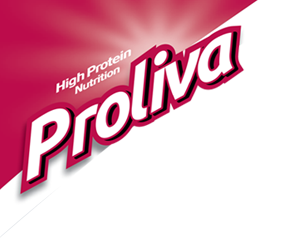-
Different Proteins and their functions
10.05.2017
Proteins are made of individual “building block” units called amino acids (AAs) that are linked together
A chain of AAs is called a peptide
Long peptides are proteinsThe order of the AAs allows different proteins to have different functions
Functions:
Enzymes
All biological enzymes are made of protein
For example, the digestive enzymes trypsin and amylaseHormones (some)
Insulin and glucagon
Not all hormones are proteins
For eg. Testosterone is a steroidStructural
Actin & myosin (muscle)
Collagen (skin)Immunologic
All antibodiesTransport and storage
Carriers of fatty acids, oxygen (hemoglobin), iron, vitamin A, copper, and other nutrients
Cholesterol and triglycerides carried by lipoproteinspH buffering
In blood, muscle, essentially everywhereEnergy source
When carbohydrates are limited (gluconeogenesis)Protein Requirement for Humans:
Normal healthy individual : Protein requirement is 0.8 to 1.0 gm/kg/day
Athelets : Protein requirement is 1.5 to 1.8 gm/kg/day
Pregnant women : 70-100 gm/day
(Please refer to Protein Calculator on our website to understand exact requirement of proteins for yourself).
Qualitative Types of Protein:
Complete protein
Contains all the essential AAs in amounts that meet or exceed the amounts needed by humans
Animal proteins (except gelatin)
Soy proteinIncomplete protein
Too low in one or more of the essential AAs to support human growth and development
Cannot serve as a sole source of protein in the diet
Most plant proteins are incomplete proteins (except soy)Metrics to understand quality of proteins:
(PDCAAS) is a method of evaluating the protein quality based on both the amino acid requirements of humans and their ability to digest it. The PDCAAS rating was adopted by the US Food and Drug Administration (FDA) and the Food and Agricultural Organization of the United Nations/World Health Organization (FAO/WHO) in 1993 as “the preferred ‘best'” method to determine protein quality.
Protein PDCAA Score Protein PDCAA Score Whey 1.0 Pea 0.893 Eggs 1.0 Chickpeas 0.78 Casein 1.0 Vegetables 0.73 Soy (ISO) 1.0 Peanuts 0.52 Soy 0.91 Wheat 0.42 FAO has recently recommended the newer (DIAAS) to supersede PDCAAS, due to its limitations. DIAAS allows a higher than 1.0 ranking, and as such, while for example both soy protein isolate and whey isolate are ranked 1.0 according to PDCAAS, in the DIAAS system, whey has a higher score than soy.
- NPU, is the ratio of amino acid converted to proteins to the ratio of amino acids supplied. As a value, NPU can range from 1 to 0, with a value of 1 indicating 100% utilization of dietary nitrogen as protein and a value of 0 an indication that none of the nitrogen supplied was converted to protein. here egg and milk has rate of 1.
- PER is based on the weight gain of a test subject divided by its intake of a particular food protein during the test period.
Latest Blog Post
- Sugary Drinks Linked to a Higher Cancer Risk
- The Latest Research on Protein and Muscle-Building
- 27 Health and Nutrition Tips That Are Actually Evidence-Based
- Tall order: More to good growth in toddlers than just measurements
- Millions of cardiovascular deaths attributed to not eating enough fruits and vegetables

